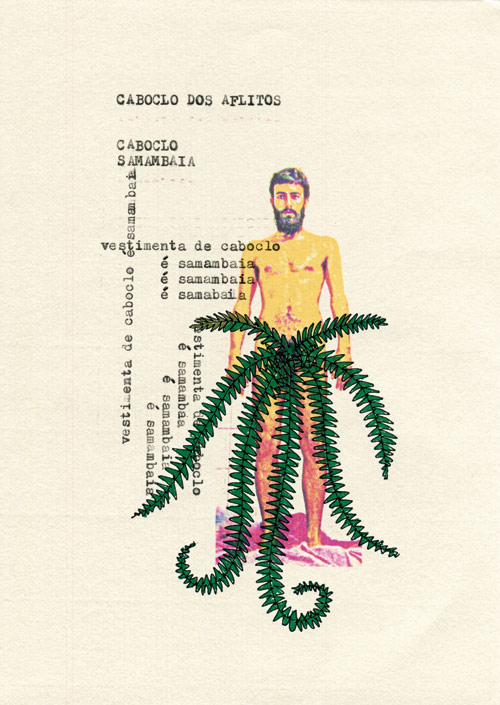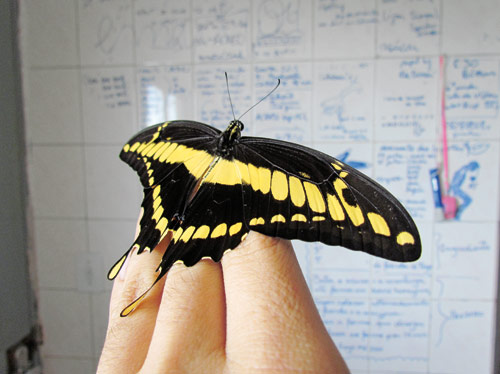2014
Arthur Scovino
Simplicity and strength – those are the main qualities of the caboclo, one of the fundamental entities of Afro-Brazilian religions umbanda and candomblé.
Simplicity of articulation, address and means characterises Arthur Scovino’s Casa de caboclo [House of Caboclo]: a constantly changing environment which could be a domestic space as well as a place of ceremony, in which a set of images (drawings, photographs, writings) and tools (books, gases and liquids) are gathered in order to serve as aids for an encounter that will take place within the environment itself.

Strength of determination and conviction are also essential to the work, and translate into a permanent occupation of that space by Scovino, the artist-as-caboclo, who, with confidence but also modesty, sets up a situation in which the unexpected can (and will) happen in intimate relation with the visitor. The caboclo and his house act both as a metaphor for what the space of art can be and do, and as an overcoming of its assumptions and limitations. Together, they make us realise that certain objects, in specific conditions, can affect us, that we can engage in a meaningful exchange with them and the space they inhabit.

This artist’s house also shows us that a communion, a transformation, can actually take place if we let ourselves be touched – an intimate transformation, inside our homes or inside ourselves. But also, the courage of the caboclo can teach us to be warriors, like the spirit of the Indians, fighting for what is fair and good. Seeing the caboclo acting, incorporated, inside the place of ceremony – in the exhibition itself – allows us to choose innocence, as the caboclo does, a wisdom that can help us leave this space and continue their tasks, which are now ours, in life. – PL




